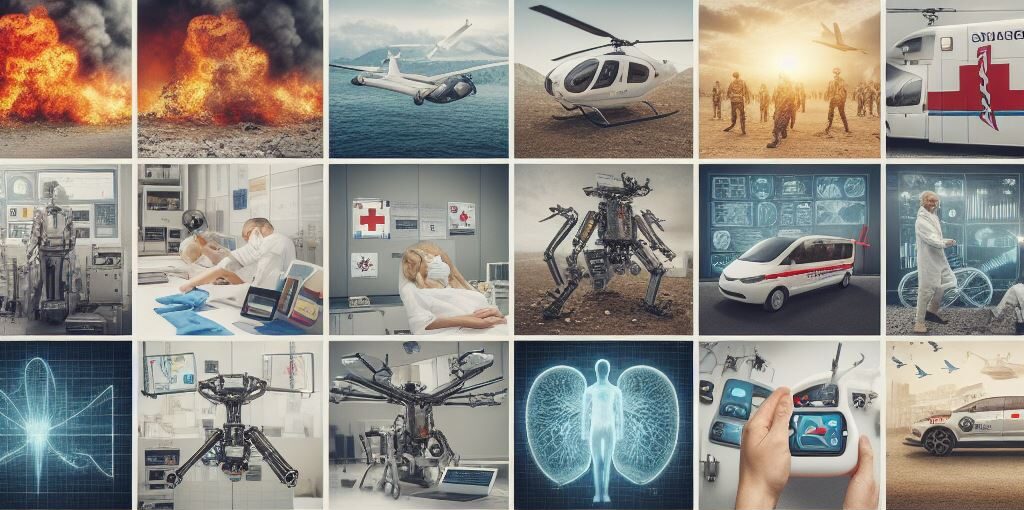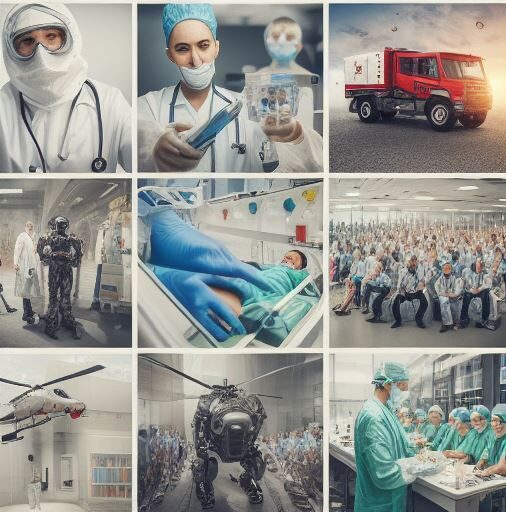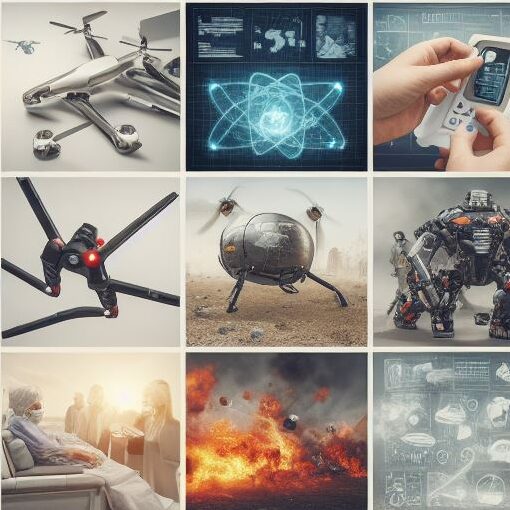
A Harbinger of Change: The Future Unfolds Emergency Medical Services (EMS) are hurtling towards a revolutionary phase where life-saving seconds are captured through advancements that would have seemed like science fiction a mere decade ago. We stand at the cusp of a radical transformation, poised to redefine the reach and efficacy of first responders. Indeed, the essence of care is being reshaped by a digital heartbeat.
Telemedicine
In the matrix of EMS innovations, telemedicine emerges as a critical game-changer. It bridges distances that once could mean the difference between life and death. Picture this scenario: an individual is grappling with a severe allergic reaction in a remote area. Traditionally, by the time medical assistance arrives, crucial moments essential for intervention would be lost. Enter telemedicine. Now, through the lens of a camera and the immediacy of an internet connection, experts beam into the scene, offering guidance to bystanders and paramedics, delivering care concurrently as wheels roll to the rescue.
Telemedicine’s impact on EMS is about precision. When you can deliver a consult real-time, you also equip responders with information that ensures the patient’s journey from emergency site to hospital bed is less about guesswork and more about a streamlined path to recovery.
Drones
We have become familiar with drones capturing breathtaking aerial footage or the whimsy of hobbyists. But as technology in EMS evolves, these flying marvels are being summoned for a weightier cause. Shoebox-sized drones can now dart across the skies, reaching the heart of crisis zones with lifesaving equipment much faster than ambulances navigating through snarling traffic.
Drones might deliver defibrillators to a person in the throes of a cardiac arrest or zip across barriers to relay critical supplies to a natural disaster area. It’s today’s pioneering reality. This drone-assisted response slashes time spent in distress and significantly uplifts survival prospects, heralding an era where help literally falls from the sky.
AI
Human intellect has created Artificial Intelligence (AI), a compelling ally in emergency response. AI in emergency response takes the shape of predictive models that analyze data, recognize patterns, and often anticipate events before they unfold. AI transcends and becomes a sentinel for potential crises.
In Paris, a trailblazing program utilizes AI to inspect emergency call data, predicting when and where incidents are likely to occur, hence nudging ambulances to patrol these hot spots proactively. Imagine a world where the ambulance reaches the emergency before it even escalates, a visionary leap towards preemptive care facilitated by silicon sentience.
In Vivo and Virtual: Training Reimagined

EMS personnel finds themselves ever-evolving to gel with these breakthroughs. Training modules no longer just encompass mastering equipment or memorizing procedures. They now pull professionals into virtual worlds, simulating everything from natural disaster response scenarios to the high-adrenaline chaos of mass casualty incidents. This new dimension in readiness equips responders with experiences that are as close to real life as one can get while still retaining the safety net of a controlled environment.
Amid these tides of change, portability in technology garnishes the capabilities of EMS professionals. Devices that were once mounting on walls now fit snugly into the palm of a hand, from ultrasound machines to mobile ECGs. These innovations aren’t merely scaled-down versions of their larger counterparts – they’re often smarter, faster, and more intuitive.
The benefits are palpable: quicker diagnostics, spot-on vital sign monitoring, and the ability to make informed decisions on the go. The future of emergency medical services is one where the medic’s bag brims with wizardry that gives each responder a touch of omnipotence.
The Crucible of Connectivity
Core to these transformative pillars is an invisible yet potent force: connectivity. The tight weave of the emergency response network relies on the uninterrupted flow of information. It’s not just the high-speed internet that’s indispensable, the very platforms and protocols that govern the flow of data are equally paramount.
In this digital web, responders, machines, and AI conspire to forge a cascade of information that drives swift response and informed decision-making. This ether of data is the underpinning that allows all other EMS innovations to function like cogs in the wheel of a much grander mechanism.
Augmented Reality
Augmented reality (AR) bestows upon EMS an extra layer of perception. AR glasses could furnish first responders with a heads-up display of a patient’s medical history, vital signs, or interactive 3D anatomical maps. This is amplifying the comprehension of the human condition in moments of vulnerability.
In these glasses, data joins hands with vision, crafting an interface that breathes intelligence into every glance. Whether it’s navigating through unknown terrains or picturing the unseen aspects of an injury, AR could stan

d as the clinician’s sixth sense.
The profound advancements we witness today sketch out the contours of a future surviving and thriving on innovation. Yet, the road ahead isn’t minus bumps. Integration of new tech into legacy systems, training for comp
etencies that evolve by the day, and ensuring equitable access across disparate geographies are challenges that await.
The strides made towards harnessing these technologies are grand, but the overarching mission remains unchanged: to save lives. It’s a promise each development seeks to fulfill, rising on the bedrock of dedication and the spirit of service that defines EMS personnel.
The era is turning pages quick and fast, whisking EMS into a chapter sparkling with potential. Yes, the t
echnologically-powered future of emergency medical services is not without its demands and trials, but the horizon is bright with promise, illuminated by the irrefutable power of human ingenuity fused with the machine’s precision. Each day, the boundary of what’s possible extends, and through these collective efforts, we stand witness to the saving lives in ways we had never imagined.
